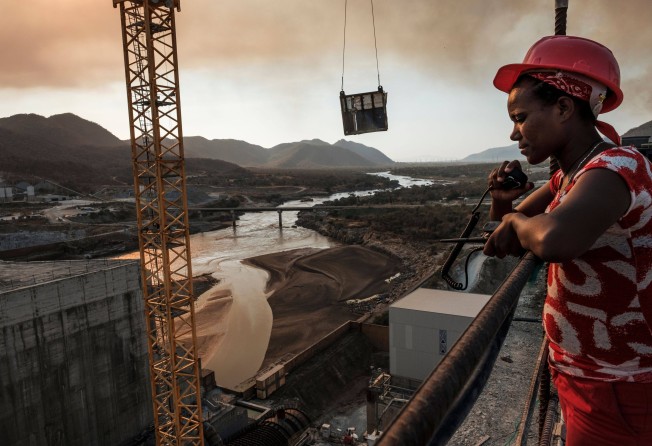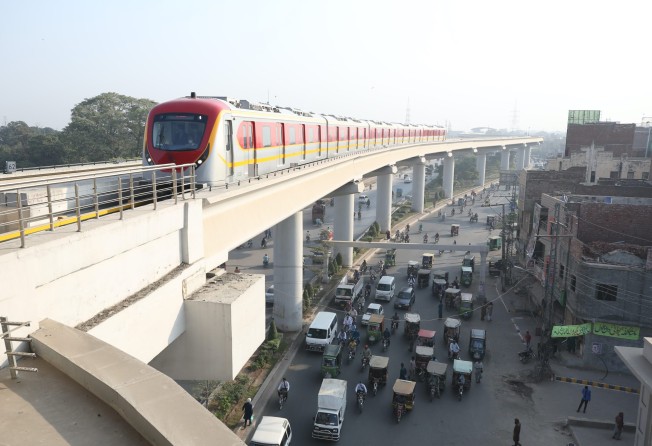.jpg?itok=1K5dew8s)
00:58
Jakarta-Bandung high-speed railway nears completion, projected to significantly cut travel time

New transparency demands from global financial institutions aimed at preventing sovereign debt distress are starting to have an impact on China-backed infrastructure projects under the Belt and Road Initiative, experts say.
As global interest rates rise and concern about developing world debt risk swirls, “sustainability” and “transparency” have become buzzwords at organisations like the International Monetary Fund (IMF) and World Bank.
The international bodies, which have traditionally been controlled by the United States and other wealthy Group of 7 nations, are pushing for greater disclosure from borrowers, including on debt contracts with China, former senior staff and analysts say.
The tighter lending standards, like the IMF’s new debt limit policy that came into effect in June last year, are being fuelled by concerns about a potential debt crisis in low-income nations, which has become more pressing following the economic shock of the Covid-19 pandemic.
“Based on assessments of debt sustainability of individual developing countries, both IMF and World Bank have estimated several of them as being on an unsustainable path,” said Otaviano Canuto, senior fellow at the Morocco-based Policy Centre for the New South.
“Under such conditions, both institutions recommend some debt restructuring as a necessary step,” added Canuto, who is also the ex-vice-president and executive director at the World Bank, as well as a former executive director at the IMF.
China is the largest single creditor to developing nations after the World Bank, according to a March report by the Green Finance & Development Centre at Fudan University in Shanghai.
Sixty-eight of the world’s poorest nations will pay US$52.8 billion this year to service debts, and more than a quarter of that will go to China.
Despite its outsize role in development finance, China has drawn criticism – especially from the United States – for not offering enough transparency around its loans, which has helped fuel accusations of “debt trap diplomacy”.
AidData, a research lab working on development finance at William and Mary, a US university in Virginia, said there are “some indications” that the IMF is now putting pressure on borrowers to disclose more information on their belt and road loan contracts, especially on terms and conditions that could make coordinated debt restructuring with other creditors more difficult.
“For example, they have zeroed in on cash collateral clauses in [Belt and Road Initiative] loan contracts that give China a first priority claim on foreign exchange in borrower countries,” said Bradley Parks, executive director at AidData.
The tougher transparency demands are already being felt in several countries taking part in the belt and road plan, such as Pakistan.
The South Asian nation reached a preliminary agreement with the IMF in mid-July for a US$6 billion bailout as it seeks to avoid a debt crisis. In recent weeks, depreciation of the rupee and rising prices for key commodities, including oil and gas, have eroded foreign exchange reserves and added to Pakistan’s economic woes.
Muhammad Faisal, a research fellow at Institute of Strategic Studies Islamabad, said the IMF “pushed” Pakistan to provide full exposure on its external and internal debts to receive the funding package.
“Western countries asked for transparency on the part of Pakistan, on its full debt exposure, including that related to China,” he said. “So Pakistani ministers issued statements that in consultation with the Chinese side, they have shared details with the IMF.”
Debt transparency is a priority for the IMF and all its members working in the interest of borrowers, creditors and financial stability, a spokesman for the organisation said.
“Our recently revised debt limits policy has strengthened transparency requirements, including with a new debt-holder profile,” he said.
“Our new policy on sovereign arrears has also strengthened its focus on debt transparency, including through the sharing by sovereign debtors with their creditors a comprehensive picture of the government debt stock, upcoming debt service, and collateralised debt.”
According to Parks, the US government “is encouraging” the IMF to intensify surveillance of debt arrangements.

“On October 25, 2021, the House of Representatives passed the Sovereign Debt Contract Capacity Act (H.R. 4111), which specifies that the Secretary of the Treasury shall instruct the US executive director at the IMF to use the voice and vote of the US to advocate the promotion of international standards,” he said.
The move targets lower middle-income countries and countries eligible to receive help from the World Bank’s International Development Association, he said, with the aim to improve their ability to evaluate the legal and financial terms of sovereign debt contracts.
In recent years, there has been heated debate about the value and sustainability of big-ticket infrastructure projects financed by China in developing countries.
Last week Zambia cancelled US$1.6 billion in agreed upon but not-disbursed Chinese loans, mostly from China Exim Bank and the Industrial Commercial Bank of China, to stabilise its macroeconomic position.
China has since agreed to debt restructuring that paves the way for the southern African nation to access a US$1.4 billion bailout from the IMF.
In 2020, Zambia became the first African country to default during the pandemic when it failed to make payments on US$17 billion of external debt, including US$3 billion dollar-denominated bonds. Lusaka owes Chinese lenders about US$6 billion, which went into building mega projects, including airports, highways and power dams.
China has been criticised for entrapping some developing nations through belt and road lending so it can gain political leverage and seize strategic assets in the event of a default. But the idea has been rubbished by Chinese officials and some Western scholars.
At the Boao Forum for Asia in April, former central bank governor Zhou Xiaochuan said most lending for belt and road projects has been demanded by companies in debtor countries and can generate economic benefits in the long run.
However, he acknowledged that some Chinese lending might not have always been “carefully designed” and poor communication has created problems.
Speaking at a forum on debt sustainability in Beijing last week, Rahamtalla Mohamed Osman Elnor, the African Union representative to China, dismissed the idea of the “Chinese debt trap in Africa”.
“The debt crisis in African countries started after our independence in the 60s and 70s; China was not involved in the debt trap,” he said at the event co-organised by Tsinghua University’s Department of International Relations and China Forum under the Centre for International Security and Strategy.
“The majority of the debt now in Africa, when we are talking about debt as a crisis, China is not part of it.”
Hu Shisheng, a senior research fellow and director for the Institute of South Asian Studies at the China Institutes of Contemporary International Relations, said the debt-trap narrative is used by the US and other Western countries to suppress the growing influence of China in the developing world.
“Take the examples of debt crises in Pakistan and Sri Lanka, Chinese debts are only around 10 per cent of each country’s total respectively,” he said. “There is a conflict of concepts between China and Western countries, with the former emphasising that building roads will lead to prosperity whereas the latter stressing the importance of getting enough money before constructing roads.”
Against the backdrop of tighter debt monitoring by global financial institutions, China has also become more cautious about its belt and road financing, with its big policy banks growing increasingly wary about borrowers’ ability to repay loans.
The recently-opened Nairobi Expressway, which was built and financed by the state-owned China Road and Bridge Corporation, highlights a gradual shift in how belt and road projects in Africa like highways and power plants are financed.
The elevated dual carriageway materialised through a public-private partnership model in which the Chinese firm will recoup its investment by charging toll fees for 27 years before transferring ownership to the Kenyan government. Previously public-debt financing was the norm.
The US and its allies are likely to continue using “debt issues” to highlight the downsides of borrowing from China as a part of “a long-running battle between Beijing and Washington” over how best to fund infrastructure and other investments, said James Crabtree, executive director of the International Institute for Strategic Studies based in Singapore.
Murtaza Jafferjee, chair of the Advocata Institute in Sri Lanka, echoed his views, saying there was a geopolitical game in which big powers were fighting for influence in developing countries.
That geopolitical game was in full view after Sri Lanka defaulted on debt worth US$51 billion in April.
In the ensuing chaos, the US was quick to highlight the role of China as an important creditor to the island nation. Last month US Treasury Secretary Janet Yellen urged Beijing to restructure its bilateral loans with the country.
For its part, China has blamed the monetary and fiscal policies of developed countries for stoking international economic instability, which has sent “shock waves to developing nations” like Sri Lanka.
Looking ahead, exactly how far China will align itself with IMF-led debt sustainability standards is unclear. But the spectre of a debt crisis among developing nations is unlikely to go away any time soon.
With the global economy slowing, Crabtree said the world is likely to see the “same kind of debt stress that helped cause Sri Lanka’s ongoing political crisis in other emerging countries”.
Additional reporting by Orange Wang